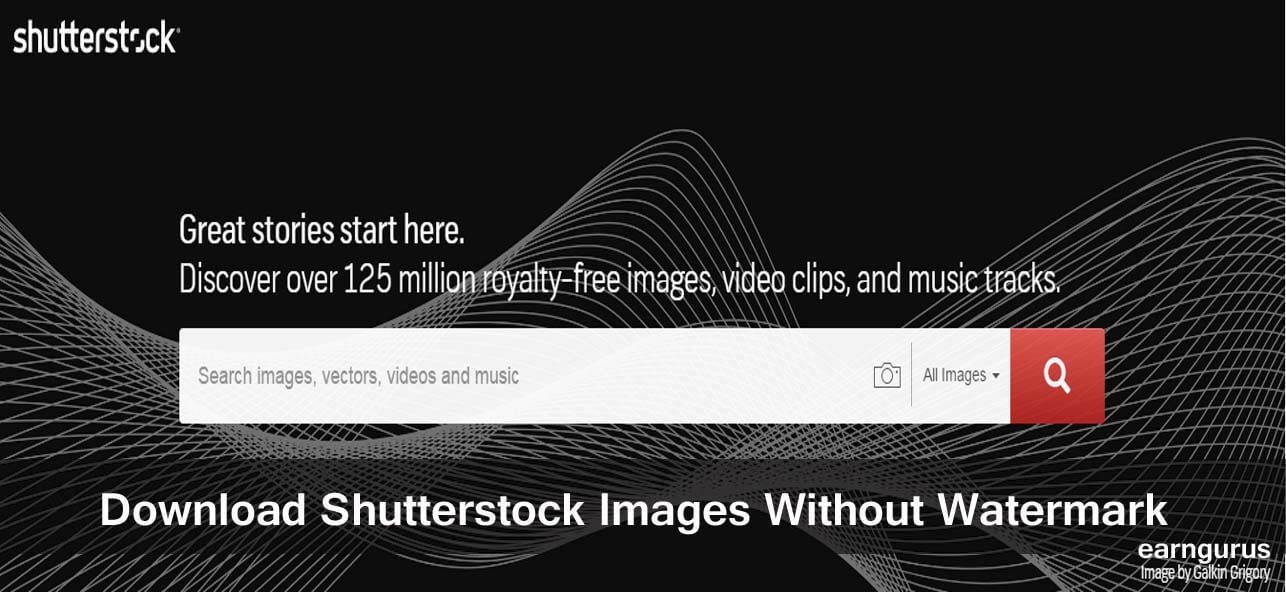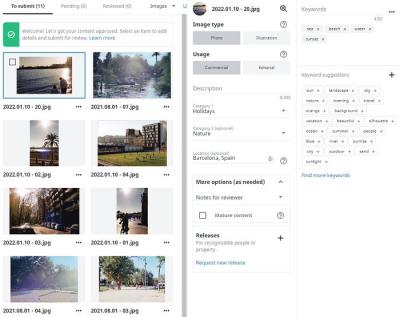If you’ve ever searched for the perfect image to complement your project, you know how tricky it can be to find high-quality visuals without breaking the bank. Shutterstock is a popular platform offering a vast library of stunning images, but most come with a price tag. Luckily, there are legitimate ways to access Shutterstock‘s images for free, whether you’re a student, educator, or just someone looking to save a few bucks. In this guide, we’ll explore how you can legally obtain free images from
Understanding Shutterstock’s Licensing and Usage Policies

Before you start downloading or using images from Shutterstock, it’s essential to understand their licensing and usage policies. Shutterstock offers different types of licenses, primarily standard and enhanced, each with its own rules about how you can use the images.
Standard License allows you to use images for most common purposes like websites, blogs, social media, marketing materials, and presentations. However, there are limits — for example, you can’t resell the image as a standalone product or use it in items for redistribution.
Enhanced License provides broader rights, including the ability to use images in products for resale or large-scale commercial use. This license is more expensive but offers greater flexibility.
Now, regarding free access, Shutterstock doesn’t typically give away images for free through their standard licensing process. However, they do offer some legitimate ways to access images at no cost:
- Free Trial Periods: Shutterstock often provides free trial offers allowing you to download a limited number of images without charge. Be sure to read the terms and cancel if you do not wish to continue with a paid subscription.
- Free Image Collections: Occasionally, Shutterstock releases free images or collections as part of promotions or for educational purposes. These are usually clearly marked as free and come with specific licensing terms.
- Contributor Freebies: Sometimes, contributors offer free downloads of their images as a promotional tool. These are legitimate and often come with specific licensing info you must follow.
It’s crucial to avoid unofficial or third-party sites claiming to offer free Shutterstock images, as these may violate Shutterstock’s copyright and licensing policies, potentially leading to legal issues.
In summary, while Shutterstock is primarily a paid service, understanding their licensing options and keeping an eye out for official free offerings can help you access high-quality images legally and safely. Always read the licensing terms carefully to ensure you’re compliant with their policies and respect the rights of the content creators.
Strategies to Access Free Images on Shutterstock
Getting high-quality images without spending a dime might sound like a tall order, but with a few smart strategies, you can make the most of Shutterstock’s free offerings. Here’s what you need to know:
- Use the Free Image Collection: Shutterstock offers a dedicated section where they showcase free images that you can download without any charge. Make sure to regularly check this section because they update it often with fresh content.
- Take Advantage of Promotional Offers: Sometimes, Shutterstock runs special promotions or campaigns that include free downloads or credits. Signing up for their newsletter or following their social media channels can keep you in the loop for these opportunities.
- Participate in Contests or Events: Occasionally, Shutterstock hosts photography contests or community events where winners or participants get free image downloads or subscriptions. Engaging with their community can sometimes lead to free access.
- Leverage Creative Commons and Royalty-Free Alternatives: While not directly from Shutterstock, some free image platforms partner with Shutterstock or offer images licensed similarly. Always double-check the licensing terms to ensure you’re using images legally and ethically.
Remember, while these strategies can help you access free images, always respect licensing terms. Using images improperly can lead to legal issues, so it’s best to double-check licensing information before downloading and using any image.
Utilizing Shutterstock’s Free Trial and Free Image Sections
One of the easiest ways to access a treasure trove of free images from Shutterstock is by leveraging their free trial and free image sections. Here’s how you can do it:
Shutterstock Free Trial
Shutterstock often offers a free trial period for new users. During this time, you typically get a set number of free downloads or a limited period to explore their entire library without charge. Here’s what you should keep in mind:
- Sign Up and Choose the Free Trial Option: When creating your account, look for the free trial offer. It’s usually prominently displayed on their website.
- Understand the Limitations: Free trials often come with a cap on the number of downloads or a specific duration (like 7 days). Make sure to plan your downloads accordingly.
- Cancel Before the Trial Ends: To avoid being charged, remember to cancel before the trial period expires if you don’t wish to continue with a paid subscription.
Using the free trial is a great way to access premium images at no cost, especially if you have a one-time project or just want to test out the quality of Shutterstock’s images.
Shutterstock Free Image Section
Aside from the trial, Shutterstock maintains a dedicated free images section on their website. Here’s how to make the most of it:
- Navigate to the Free Images Section: Usually found under the ‘Free’ tab or in the footer links, this section displays images available for free download.
- Filter Your Search: Use filters like categories, orientation, or keywords to find images that suit your project needs.
- Check Licensing Details: Even free images from Shutterstock come with licensing terms. Make sure you understand whether the image is free for commercial use or if attribution is required.
- Download and Use: Once you find an image that fits your needs, simply click to download. Keep a record of the licensing terms for future reference.
Using these free sections responsibly not only saves you money but also ensures you stay within legal boundaries. It’s a win-win for creators and users alike!
Alternative Ways to Download Free High-Quality Images Legally
If you’re on the hunt for stunning, high-resolution images without breaking the bank or risking legal trouble, you’re in luck! There are plenty of legitimate sources and methods to access free, high-quality images that can elevate your projects.
First off, consider using free stock photo websites that offer images under Creative Commons licenses or their own royalty-free licenses. Some popular options include:
- Unsplash: Offers a vast library of beautiful, high-resolution images contributed by photographers worldwide. All images are free to use for commercial and personal projects, often without attribution.
- Pexels: Provides a wide variety of free stock photos and videos. Their license allows for modification and commercial use without requiring credit.
- Pixabay: Contains photos, illustrations, vectors, and videos—all free for use. Their content is released under a license that permits modification and commercial use.
Another great approach is to explore platforms that offer free images under Creative Commons licenses, such as Flickr. Just make sure to filter your search by licenses like CC0 or CC BY, and always double-check the licensing details before downloading and using the images.
Additionally, some photographers and artists share their work on social media platforms like Instagram or DeviantArt. If you find an image you’d love to use, reach out directly to the creator and ask for permission. Many are happy to share their work if you give proper credit or agree to specific terms.
Lastly, consider creating your own images or commissioning a photographer if you need something unique. Not only does this give you full rights to the content, but it also adds a personal touch to your project!
Tips to Ensure You’re Complying with Shutterstock’s Terms of Use
Even when you’re exploring alternative sources for free images, if you decide to use Shutterstock images, it’s crucial to understand and adhere to their Terms of Use to avoid legal issues. Here are some helpful tips:
- Read the License Agreement Carefully: Shutterstock’s licensing terms specify how you can use their images. Make sure you understand what is permitted—whether it’s for personal projects, commercial purposes, or modifications.
- Check the License Type: Shutterstock offers different licenses, such as Standard and Enhanced licenses. Ensure the image you choose is licensed for your intended use, especially if you plan to reproduce or distribute widely.
- Use Images Within the Allowed Scope: Do not resell Shutterstock images as standalone files or use them in a way that implies Shutterstock’s endorsement. Also, avoid using images in defamatory, obscene, or illegal contexts.
- Attribute When Required: While Shutterstock images generally do not require attribution, some licenses or circumstances might. Always verify if attribution is necessary and provide proper credit if so.
- Keep Documentation: Save proof of your license purchase or download. This can be helpful if any questions or disputes arise regarding your rights to use the images.
- Avoid Unauthorized Downloads: Never try to download images through unofficial or third-party tools that bypass Shutterstock’s licensing system. Doing so is illegal and can lead to serious consequences.
- Stay Updated on Policy Changes: Licensing terms can change. Regularly review Shutterstock’s terms of use to stay compliant, especially if you plan to use their images over an extended period.
By following these tips, you can confidently use Shutterstock images while respecting their licensing policies. Remember, respecting copyright and licensing agreements not only keeps you legally protected but also supports creators and photographers who share their work with the world.
Conclusion and Best Practices for Using Shutterstock Images Legally
Using Shutterstock images responsibly is essential to avoid legal complications and respect the rights of content creators. Always ensure you have the appropriate license before downloading and using an image. Shutterstock offers various licensing options, including Standard and Extended licenses, each with specific usage rights. Carefully review the license agreement to understand restrictions related to commercial use, modifications, and distribution.
To maximize legal safety and ethical use:
- Always purchase or subscribe through official Shutterstock channels.
- Keep records of your licenses and receipts for proof of authorized use.
- Use images only within the terms specified by your license—avoid cropping, overlaying, or editing images in ways that violate restrictions.
- Be cautious with model and property releases—ensure they are available if the image features identifiable people or private property.
- Respect copyright and avoid unauthorized redistribution or resale of Shutterstock images.
In conclusion, adhering to Shutterstock’s licensing terms and practicing ethical usage not only protects you legally but also supports the artists and photographers who create valuable visual content. Staying informed about licensing updates and best practices ensures your projects remain compliant and respectful of intellectual property rights.

